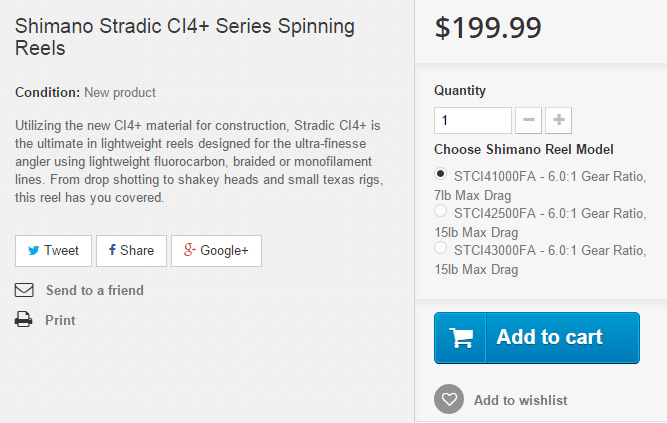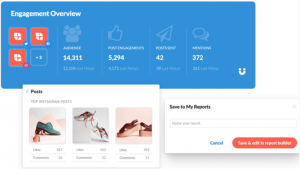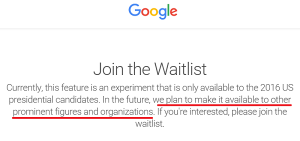Many popular e-commerce sites have hundreds of thousands of products and a great potential to do well online. However, when it comes to optimizing for the search engines, they just assume their enormous size will stamp out any SEO troubles they might face.
Others put their faith in social media marketing, email or their niche communities online: all that’s great, but as research from Custora shows, organic search delivers the highest value customers to most e-commerce sites. SEO clearly beats PPC, social media, email and other digital channels in inspiring trust and credibility from customers. This is reflected in how much customers who come from organic search spend over the course of their relationship with the brand – a staggering 54% more than the average!

So, it’s vital to get SEO right. Here are the top 7 ways that too many e-commerce sites are blowing it!
1. No Product Reviews
Product reviews get you probably the best value for money you’ll never spend. User generated content is trusted more than anything you can say, and users love to contribute it and read it. Used correctly, it can trigger a 105% increase in sales, according to data from Bazaarvoice Conversation Index. Many e-commerce sites still don’t have customer reviews!
The symptoms
Not having customer reviews doesn’t get you penalized, but you’re leaving money on the table if you don’t have them. Customers love them, and they stand a better chance of being in top search results than sales pages. Customers like to write reviews and search engines like unique content that gets regularly updated. Additionally, reviews will drive you up the search rankings for “product + review” searches, and improve your overall SEO according to a set of criteria including quantity and velocity.
The cure
Soliciting reviews can be useful as can asking your customers to provide reviews by email or over social media. Social media is sometimes a better option for reviews since the reviews tend to be more positive, but Google regards some review sites as being authoritative which can pay off in SEO terms.
Use a tool like IFTTT (IF This Then That) to automate social media responses so that you’re soliciting reviews and feedback as early as possible on the channels that work best for you.

Alternatively, use an email marketing solution like GetResponse to send triggered emails soliciting reviews a certain number of days after customers purchase your product or even feedback on delivery. You can also use auto-responders to ask for reviews from people who have left comments on your social channels, by integrating your email autoresponders with IFTTT.
2. No Product Description
Product descriptions are your sales pitch for that product. Imagine it’s the olden times and you’re a Fuller, brush salesman. You knock on someone’s door, they open, you show them the product,—and say nothing. Just stand there!
Every product should have an accurate, SEO-friendly description that emphasizes its benefits.
The symptoms
No product description means no unique text for Google to index on that page. A non-unique page is effectively invisible. With no text, you have little chance of being found even by consumers searching for unusual keywords.
The cure
Written product descriptions are a must. Google indexes the text, so make sure to include both “chunky head” and “long tail” keywords.
How much text should be on your product page? For SEO purposes the answer is, you want a unique text than the default text that’s already there. So add up any text that’s present in a blank product page, including header, footer, navigation, sidebar, etc. Then make sure you have a unique version than that.
Want to win big with search engines? Aim for people. Make your product description unique, compelling and useful, and the SEO benefits will follow.
There are other kinds of product descriptions. Product Description videos increase customer understanding of a product by 74% (though I’m at a loss to understand how they measured that) and 52% of consumers said they felt more confident in their purchase decisions after watching a video. Video product descriptions skew toward mobile and of the 80% of internet users who reported viewing a video ad in the last 30 days, 12% purchased the product.
Enhance video product descriptions with YouTube-hosted tutorials and user-generated unboxings and reviews; you’re getting traffic and content you can share on other social networks, Moreover, you gain a presence on the second-most popular social networking site (as found by the GlobalWebIndex Social study) and the second-most popular search engine, both Google-owned. Has that no effect on traffic? Think again.
You can also use a dedicated webinar tool like ClickMeeting to create webinars that demonstrate in-depth techniques to leverage all your product’s features and let you answer users’ questions in real time. These can come from your in-house video conferences as well as moderated focus group chats.
While webinars can be time and resource intensive, that content can go on to have further different lives as blog posts, SlideShare presentations, and YouTube video series.
3. The Manufacturer’s Product Description
The manufacturer’s product description is usually not written that carefully. So beware of blindly copying it. That will only make your customers blind to what you’re selling. For instance, here’s what a fishing gear retailer has to say about one of their latest products:

What does the description tell you, should you happen to be looking for a good fishing reel? Is CI4+ some alien metal from Krypton? Would you call yourself an “ultra-finesse angler”? Unfortunately, this description has been lifted hook, line and sinker (if I may be allowed to use an ultra-finesse angling idiom) from the Japanese manufacturer’s site.
It is your job to create sales-friendly, SEO-friendly product descriptions. The manufacturer’s job is creating the product in large quantities. The appeal of uploading it (from a great big spreadsheet from the manufacturer), setting it and forgetting it is easy to understand, but that doesn’t make it a good idea.
The symptoms
First, this is a duplicate content disaster waiting to happen. Google will likely slap an algorithmic penalty on your whole site, one that you’ll be carrying around until the next algorithm update six months or a year from now if you do this.
Second, it sucks for sales. That means it’s not bringing you the SEO benefits an audience of happy, engaged consumers creates in its wake.
The cure
Always, always, write your product descriptions. Always make them sales-friendly, always make them SEO-friendly and always make them unique. If you have that most common excuse – “But I have millions of products!” – Prioritize them and write descriptions in batches. The only way to eat an elephant is one bite at a time.
If you can’t do it for some reason, write that page off as an organic dead loss and slap it with an NOINDEX tag – even unindexed content is better than a penalty. Another alternative is to utilize user generated content like reviews and social media comments to populate less-popular pages while making sure that parent categories are well-written, and the site architecture is up to scratch.
4. Generic Title Tags
To some extent, your title tags will have some duplication. There’s no way around it. Every SEO and his dog now know that the page title is the most important facet of your site’s on-page SEO. But how can, say, thirty watches from Seiko all have unique title tags? “Seiko” and “watch” will probably appear in each one. And more often than not, your favorite SEO tool will also complain about these.
The symptoms
Generic, duplicate title tags set Google’s duplicate content alarms blaring. That’s bad news for your whole site. Conversely, the more unique they are, the more different search terms your site can rank for.
The cure
If you can’t have unique keywords in your title tags, shoot for unique key phrases. Keywords always were a condition of building a search algorithm with low technology, not a reflection of the way people search the web: increasingly searches look more like questions that involve a key phrase rather than a collection of keywords. Google knows this and allows for it in its algorithms. SEOBook has a free meta tag generator that will help you to avoid generic, Google-antagonizing tags.

5. Pages That Aren’t Optimized for Search Demand
Search demand means the search terms that consumers are using to look for products. You can see a clumsy version of this in action by looking at eBay – look up a product and you’ll get a title with every possible iteration, variation and TV tie-in that could jump it up the search rankings. You shouldn’t be doing that – but you shouldn’t settle for a bland description of the product either.
The symptoms
There are a lot of products. Want to get found? You need to stand out to search engines – which means using unique, targeted titles and other page text. The whole page should be optimized for search terms that are being searched and have a search volume so you can make enough sales profitable.
The cure
Find out which search terms are in use with Google’s AdWords Keyword Planner (even for those with little search volume, you’ll see high competition) or your preferred tool. Consider variables like color and size, age, style, material – anything to shrink the keyword arena you’re competing in while increasing relevance within it.
6. Keyword-Unfriendly URLs
Go onto some e-commerce sites and look at the URL bar. You’ll find yourself looking at something that sounds like it was enciphered three times to fool the enemy. What exactly is product/2168y78t46327y7/ anyway? If you don’t know, the search engines don’t know either.
The symptoms
Keyword-unfriendly URLs are sometimes referred to as a “speaking” vs. “non-speaking” URL problem. A URL that speaks to you might look like this: http://www.somesite.com/nostalgic-pocket-watch-necklace-3659-p.html
Want to guess what’s on sale here? You don’t have to. It’s right there in the URL. Long strings of gibberish in the URL box also make customers concerned – it looks spammy. These can hurt your SEO.
The cure
It’s OK to have some gibberish in your URLs but try to make them as succinct, clear and human-like as possible. Google used to care more about relevant keywords in URLs than it does now, but it’s still a good idea to avoid auto-generated strings and query parameters. If someone who’s never seen them before can’t tell where they lead by the URL alone, maybe rewrite them.
When easy-to-read URLs are picked up and reposted or linked to, they get relevant keywords in the anchor text – a big SEO win for you.
7. Duplicate Content Duplicate Content
See what I did there? Just like you, Google doesn’t like duplicate content at all. It’s a strong suggestion that your site is spammy or otherwise up to no good, and a range of Google penalties await the e-commerce practitioner or webmaster who doesn’t heed this rule.
The symptoms
Panda is the hardest of Google penalties to detect because, in addition to a lack of notice, it isn’t applied evenly across the site. There is no benchmark for “good” or “useful” content. Instead, you’ll just see your traffic nosedive. It can take a year or more to recover from a Google Panda penalty.
And how do you get one? “Spammy content is the number one cause of algorithmic penalties,” according to Neil Patel. The impact can be severe, resulting in the loss of 80% of organic traffic in some cases.
The cure
Start with the content on your site. Check that main-body content like product descriptions is unique to each page, beginning with your highest-ranking pages and working downwards.
If that’s OK, your next stop should be the boilerplate content that’s the same on every page. Headers, footers, disclaimers, and standardized notices that tell customers what to do if you’ve sold out or alert them that their item is one of only X remaining can get you in trouble too. You need to use your robots.txt to block off any repetitive pages and sections so that they don’t get indexed.
Finally, what about a duplicate content you don’t have control over? Suppose a customer goes to your site, hits the dropdown, selects a category, goes to it, opens another drop-down and selects a product? They’ll now be on a page whose URL contains a trail of all those actions but which is in every other respect identical to the original page. Google will see both pages. See the problem? Reviews and comments can have the same effect.
Fortunately, there is a solution: if you use “faceted navigation,” as in the above example, the canonical tag lets you tell Google which version of the page you want to consider as the main one and which others are subsidiary to it. You do this by putting the rel=”canonical” tag in the section of web pages that point back to the default page, so search engines know they’re “ghost duplicates,” not spammy content.
In Conclusion
The SEO effects of these seven big no-nos shouldn’t be underestimated. Google penalties can slash organic traffic and the easiest way to trigger one is weak content. Lesser SEO penalties are caused by careless site structure and over-optimization of links. Beyond all, that is the specter of the money you could be pocketing right now with just a few simple changes to the way your site works.
Are you an e-commerce retailer who is facing problems with organic visibility? Have you overcome any major SEO issues that were holding you back? Please share your stories in the comments.
Digital & Social Articles on Business 2 Community(125)







